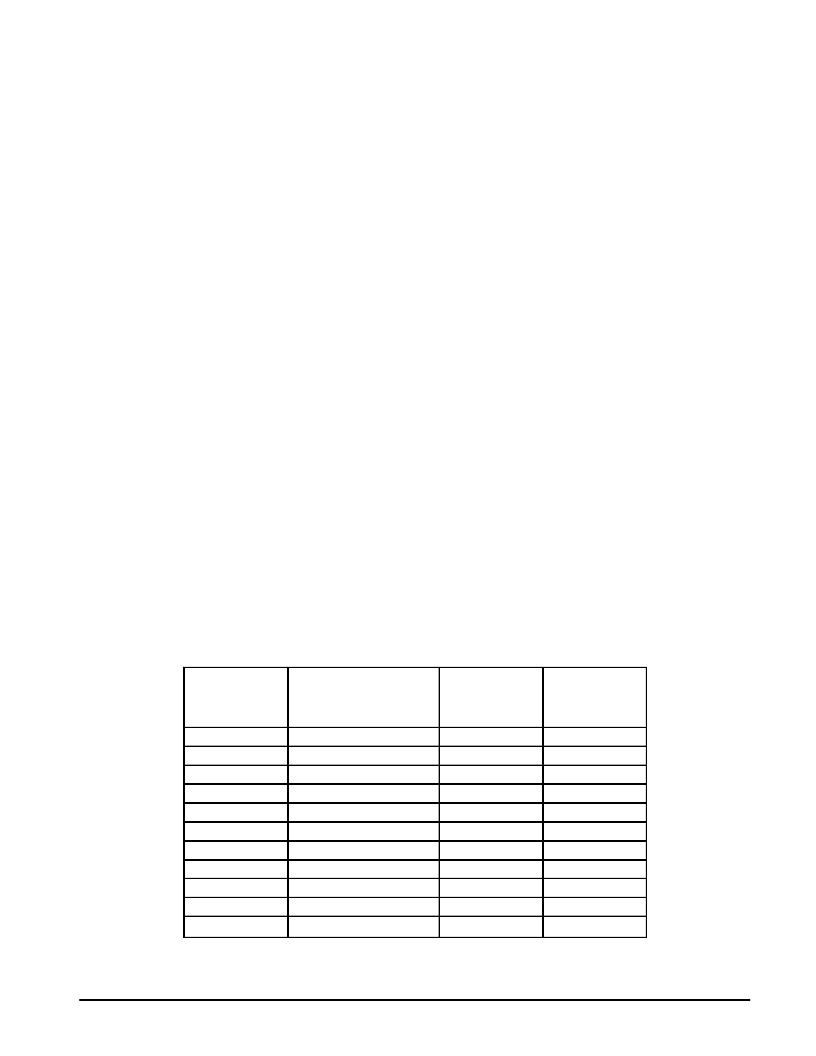- 您現(xiàn)在的位置:買賣IC網(wǎng) > PDF目錄371009 > MC13156DW (MOTOROLA INC) WIDEBAND FM IF SYSTEM FOR DIGITAL AND ANALOG APPLICATIONS PDF資料下載
參數(shù)資料
| 型號: | MC13156DW |
| 廠商: | MOTOROLA INC |
| 元件分類: | 無繩電話/電話 |
| 英文描述: | WIDEBAND FM IF SYSTEM FOR DIGITAL AND ANALOG APPLICATIONS |
| 中文描述: | TELECOM, CORDLESS, RF AND BASEBAND CIRCUIT, PDSO24 |
| 封裝: | PLASTIC, SO-24 |
| 文件頁數(shù): | 12/20頁 |
| 文件大?。?/td> | 446K |
| 代理商: | MC13156DW |

MC13156
12
MOTOROLA RF/IF DEVICE DATA
APPLICATIONS INFORMATION
Component Selection
The evaluation PC board is designed to accommodate
specific components, while also being versatile enough to
use components from various manufacturers and coil types.
Figures NO TAG and NO TAG show the placement for the
components specified in the application circuit (Figure 17).
The applications circuit schematic specifies particular
components that were used to achieve the results shown in
the typical curves and tables but equivalent components
should give similar results.
Input Matching Networks/Components
The input matching circuit shown in the application circuit
schematic is passive high pass network which offers effective
image rejection when the local oscillator is below the RF input
frequency. Silver mica capacitors are used for their high Q
and tight tolerance. The PC board is not dedicated to any
particular input matching network topology; space is provided
for the designer to breadboard as desired.
Alternate matching networks using 4:1 surface mount
transformers or BALUN
S
provide satisfactory performance.
The 12 dB SINAD sensitivity using the above matching
networks is typically –100 dBm for fmod = 1.0 kHz and
fdev =
±
75 kHz at fIN = 144.45 MHz and fOSC = 133.75 MHz
(see Figure 23).
It is desirable to use a SAW filter before the mixer to
provide additional selectivity and adjacent channel rejection
and improved sensitivity. The SAW filter should be designed
to interface with the mixer input impedance of approximately
1.0 k
. Table 1 displays the series equivalent single–ended
mixer input impedance.
Local Oscillators
VHF Applications
– The local oscillator circuit shown in the
application schematic utilizes a third overtone crystal and an
RF transistor. Selecting a transistor having good phase noise
performance is important; a mandatory criteria is for the
device to have good linearity of beta over several decades of
collector current. In other words, if the low current beta is
suppressed, it will not offer good 1/f noise performance. A
third overtone series resonant crystal having at least 25 ppm
tolerance over the operating temperature is recommended.
The local oscillator is an impedance inversion third overtone
Colpitts network and harmonic generator. In this circuit a 560
to 1.0 k
resistor shunts the crystal to ensure that it operates
in its overtone mode; thus, a blocking capacitor is needed to
eliminate the dc path to ground. The resulting parallel LC
network should “free–run” near the crystal frequency if a
short to ground is placed across the crystal. To provide
sufficient output loading at the collector, a high Q variable
inductor is used that is tuned to self resonate at the 3rd
harmonic of the overtone crystal frequency.
The on–chip grounded collector transistor may be used for
HF and VHF local oscillator with higher order overtone
crystals. Figure 18 shows a 5th overtone oscillator at
93.3 MHz and Figure 19 shows a 7th overtone oscillator at
148.3 MHz. Both circuits use a Butler overtone oscillator
configuration. The amplifier is an emitter follower. The crystal
is driven from the emitter and is coupled to the high
impedance base through a capacitive tap network. Operation
at the desired overtone frequency is ensured by the parallel
resonant circuit formed by the variable inductor and the tap
capacitors and parasitic capacitances of the on–chip
transistor and PC board. The variable inductor specified in
the schematic could be replaced with a high tolerance, high Q
ceramic or air wound surface mount component if the other
components have good tolerances. A variable inductor
provides an adjustment for gain and frequency of the
resonant tank ensuring lock up and startup of the crystal
oscillator. The overtone crystal is chosen with ESR of
typically 80
and 120
maximum; if the resistive loss in the
crystal is too high, the performance of the oscillator may be
impacted by lower gain margins.
Table 1. Mixer Input Impedance Data
(Single–ended configuration, VCC = 3.0 Vdc, local oscillator drive = 100 mVrms)
Series Equivalent
Complex Impedance
(R + jX)
(
)
Frequency
(MHz)
Parallel
Resistance
Rp
(
)
Parallel
Capacitance
Cp
(
pF
)
90
190 – j380
950
4.7
100
160 – j360
970
4.4
110
130 – j340
1020
4.2
120
110 – j320
1040
4.2
130
97 – j300
1030
4.0
140
82 – j280
1040
4.0
150
71 – j270
1100
4.0
160
59 – j260
1200
3.9
170
52 – j240
1160
3.9
180
44 – j230
1250
3.8
190
38 – j220
1300
3.8
相關(guān)PDF資料 |
PDF描述 |
|---|---|
| MC13156FB | WIDEBAND FM IF SYSTEM FOR DIGITAL AND ANALOG APPLICATIONS |
| MC13158FTB | WIDEBAND FM IF SUBSYSTEM FOR DECT AND DIGITAL APPLICATIONS |
| MC1315P | CBS SQ LOGIC DECODER SYSTEM |
| MC1312P | CBS SQ LOGIC DECODER SYSTEM |
| MC1314P | CBS SQ LOGIC DECODER SYSTEM |
相關(guān)代理商/技術(shù)參數(shù) |
參數(shù)描述 |
|---|---|
| MC13156FB | 制造商:MOTOROLA 制造商全稱:Motorola, Inc 功能描述:WIDEBAND FM IF SYSTEM FOR DIGITAL AND ANALOG APPLICATIONS |
| MC13158 | 制造商:MOTOROLA 制造商全稱:Motorola, Inc 功能描述:WIDEBAND FM IF SUBSYSTEM FOR DECT AND DIGITAL APPLICATIONS |
| MC13158FTB | 制造商:MOTOROLA 制造商全稱:Motorola, Inc 功能描述:WIDEBAND FM IF SUBSYSTEM FOR DECT AND DIGITAL APPLICATIONS |
| MC13159 | 制造商:MOTOROLA 制造商全稱:Motorola, Inc 功能描述:WIDEBAND FM IF SUBSYSTEM FOR PHS AND DIGITAL APPLICATIONS |
| MC13159DTB | 制造商:MOTOROLA 制造商全稱:Motorola, Inc 功能描述:WIDEBAND FM IF SUBSYSTEM FOR PHS AND DIGITAL APPLICATIONS |
發(fā)布緊急采購,3分鐘左右您將得到回復。